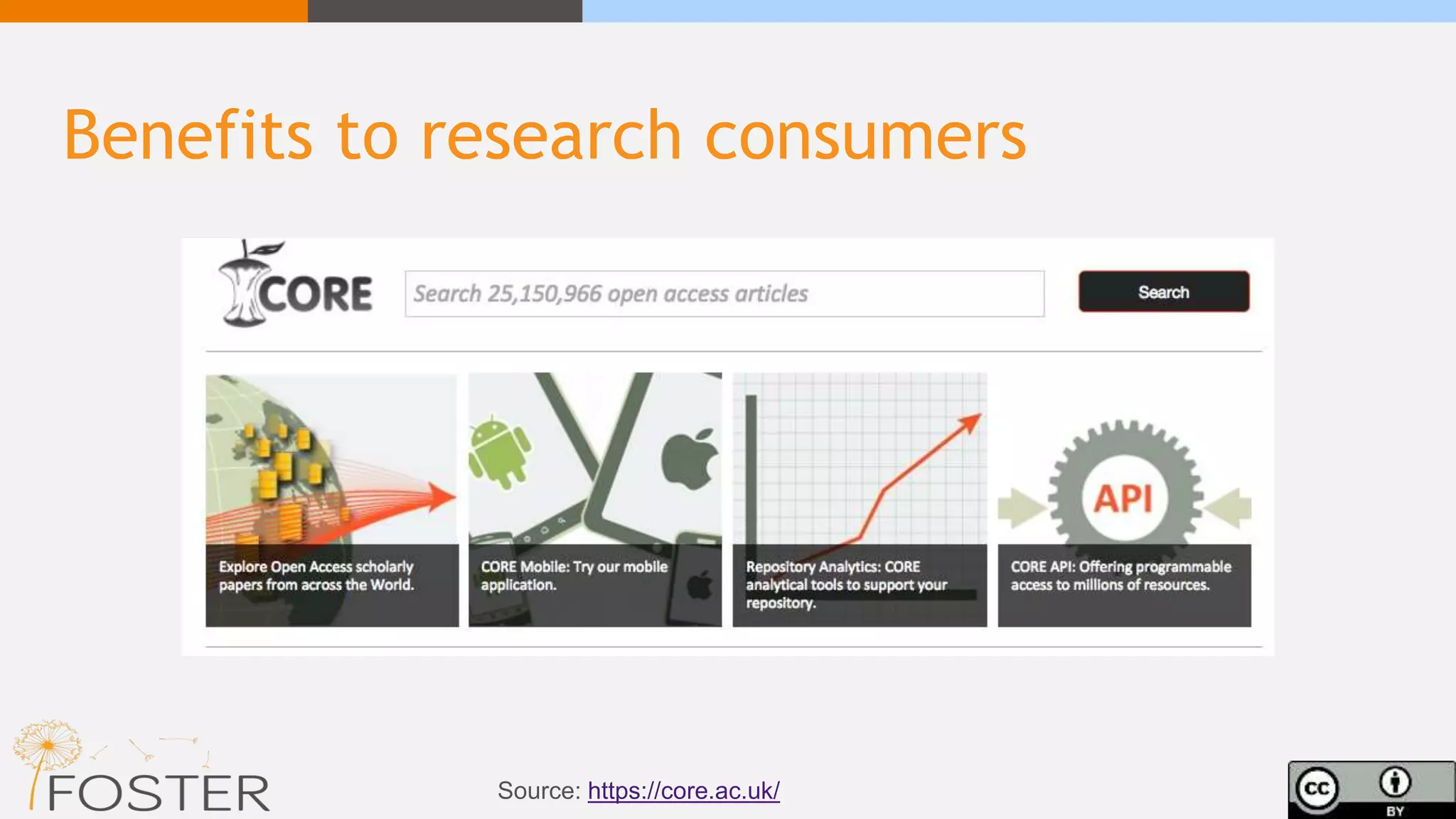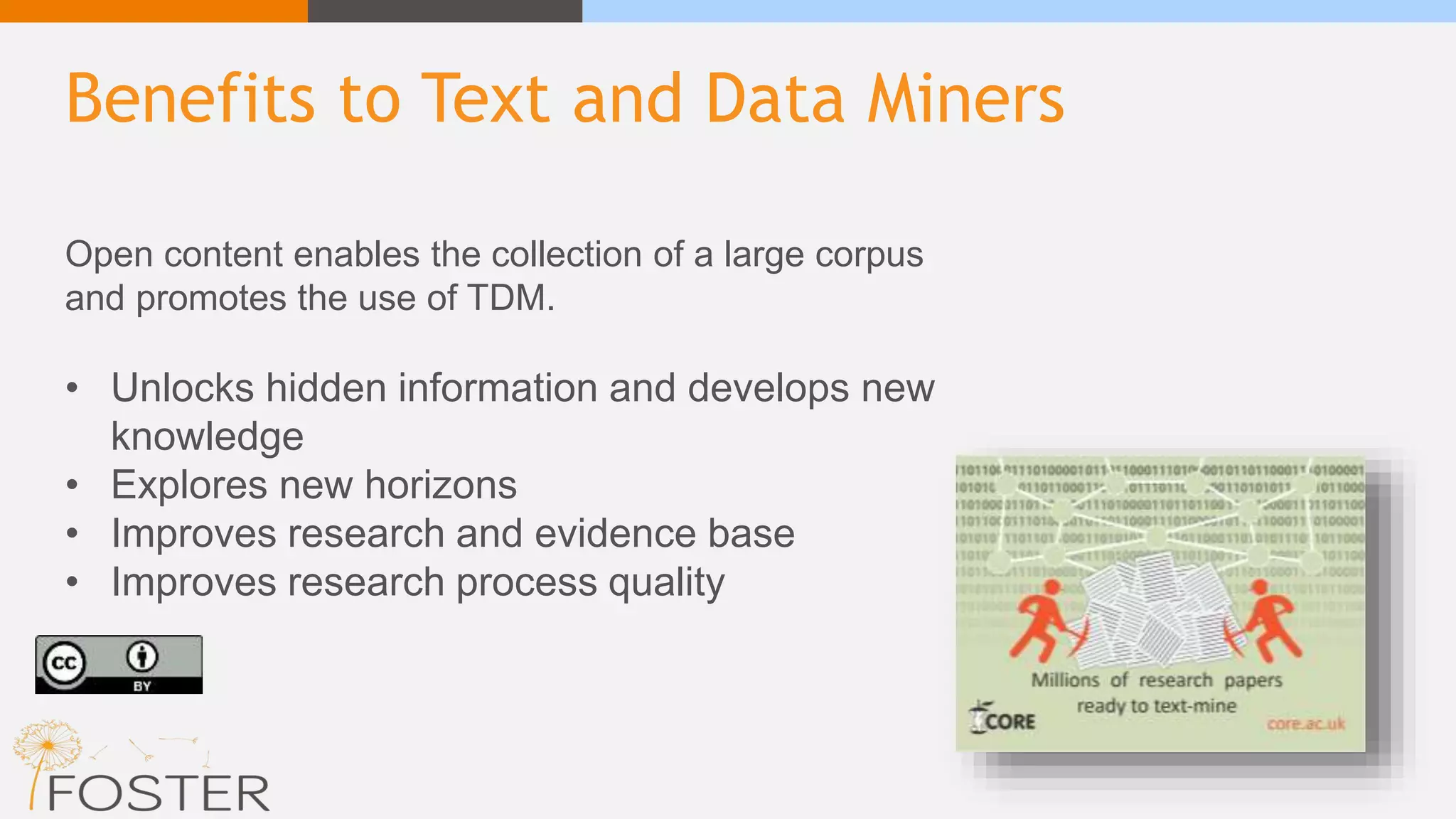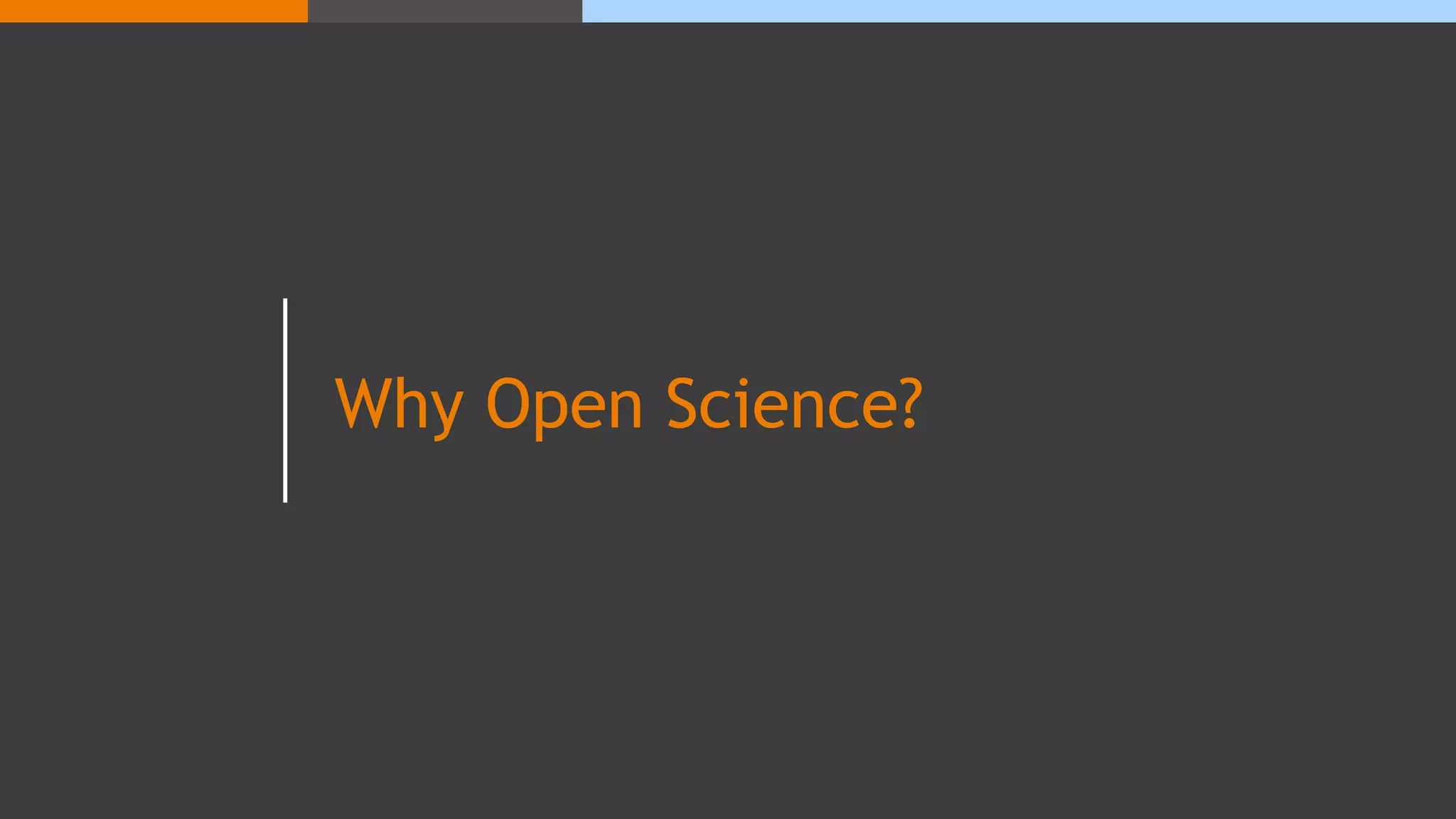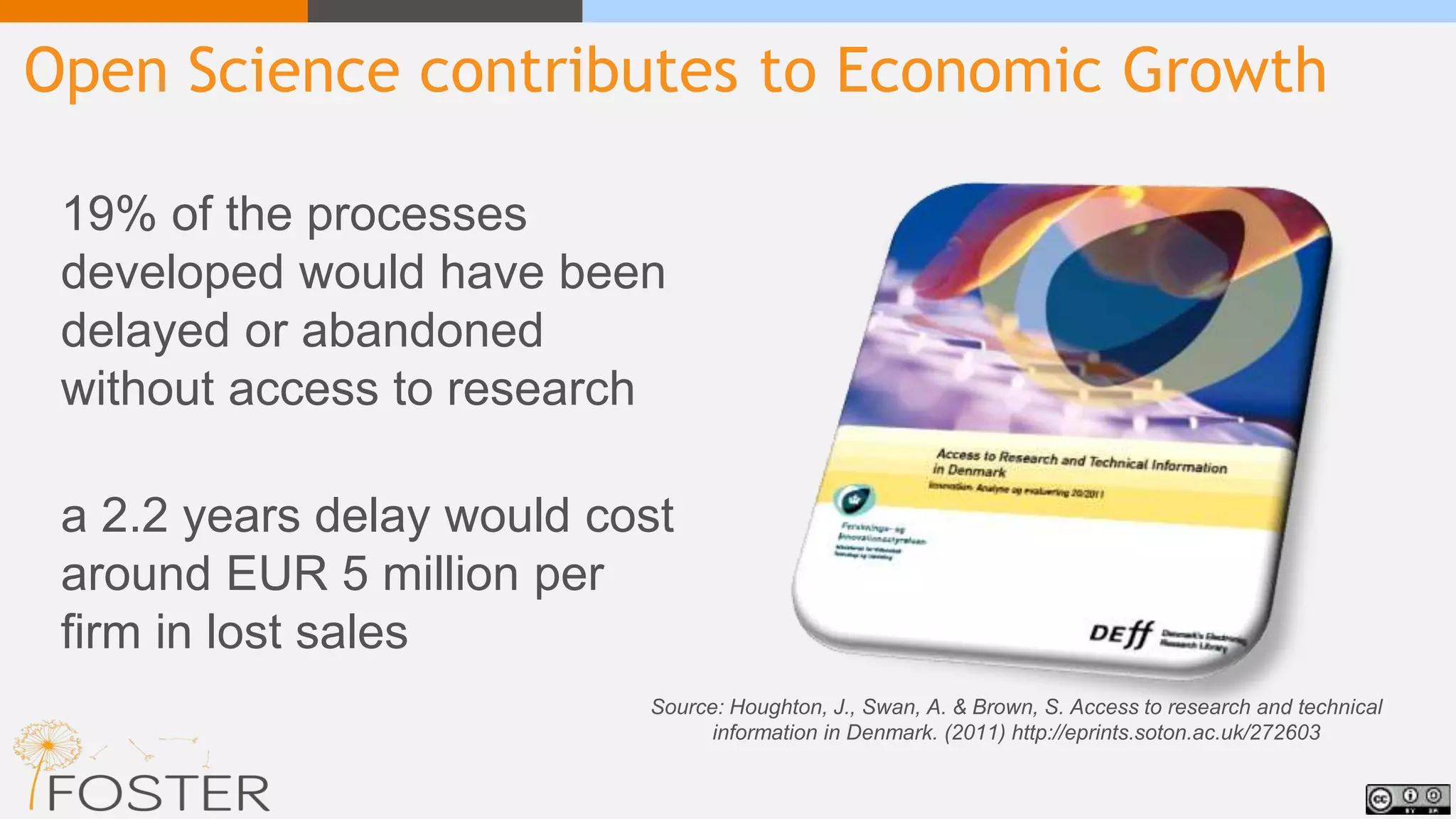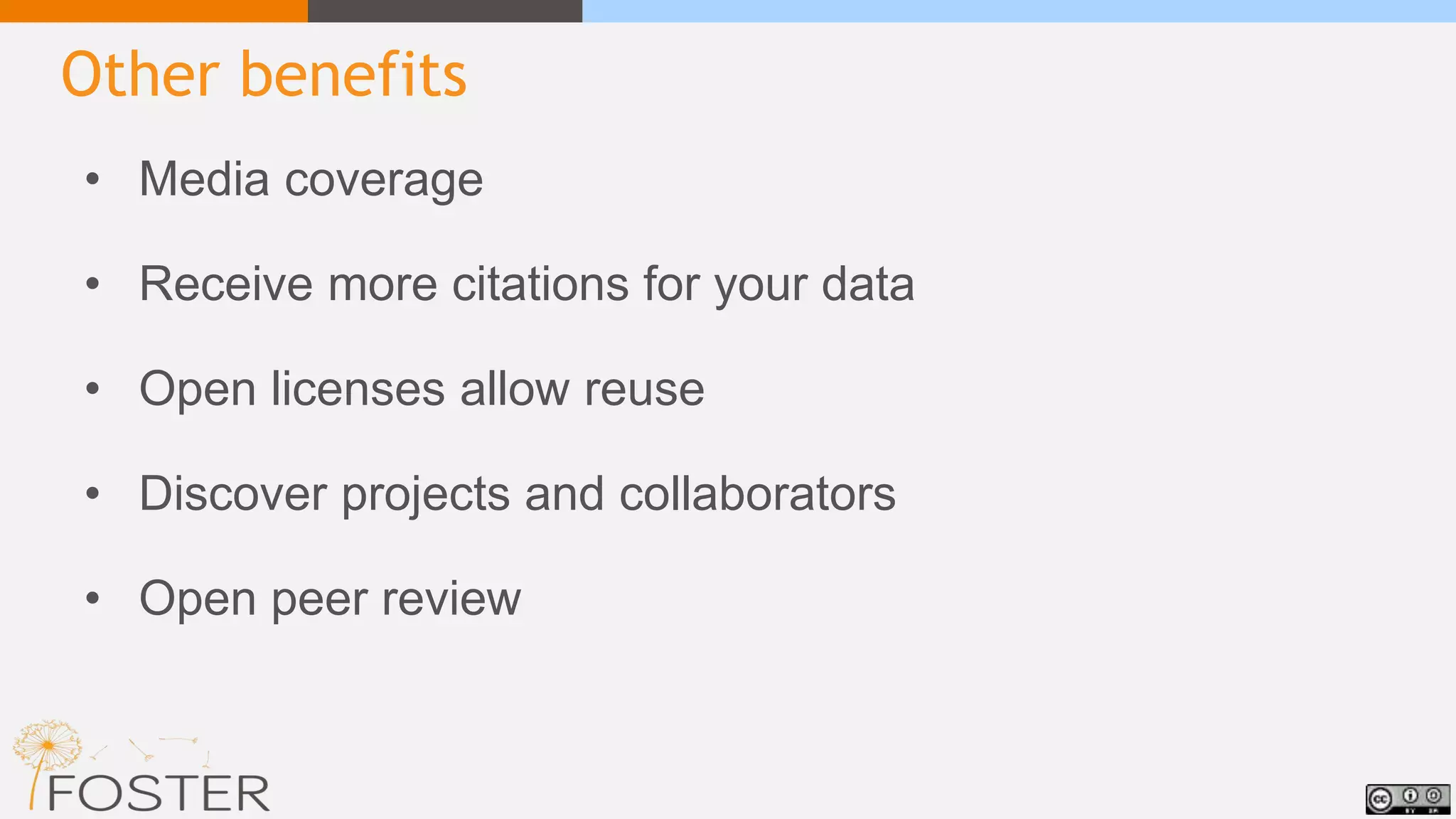Open science is a movement aimed at making scientific research, data, and dissemination accessible to all, promoting transparency and public accessibility. It enhances research efficiency, encourages collaboration, and boosts visibility while implementing policies like the Horizon 2020 open research data pilot. The approach benefits not only researchers but also research consumers by improving reproducibility, innovation, and economic growth.
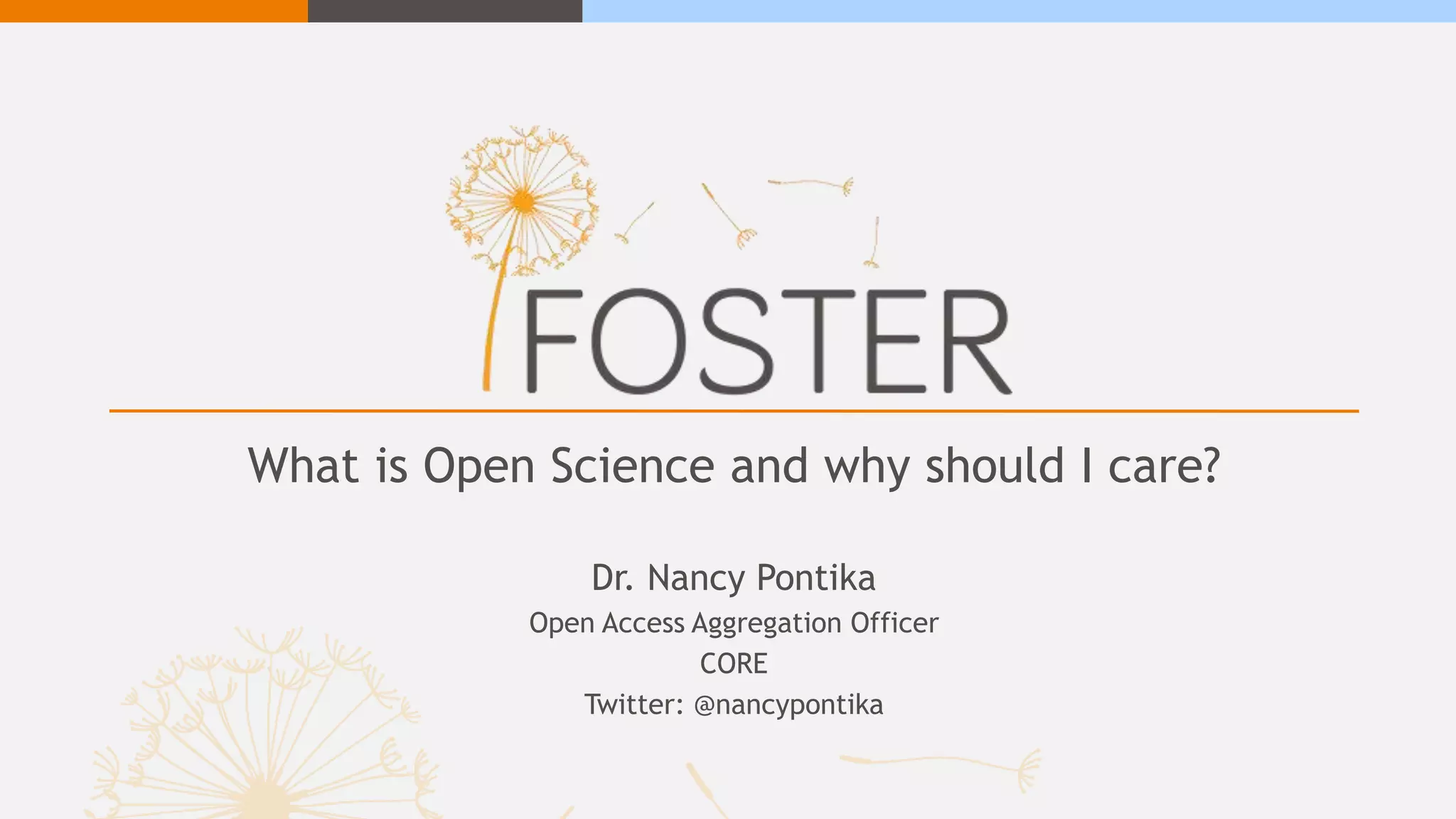
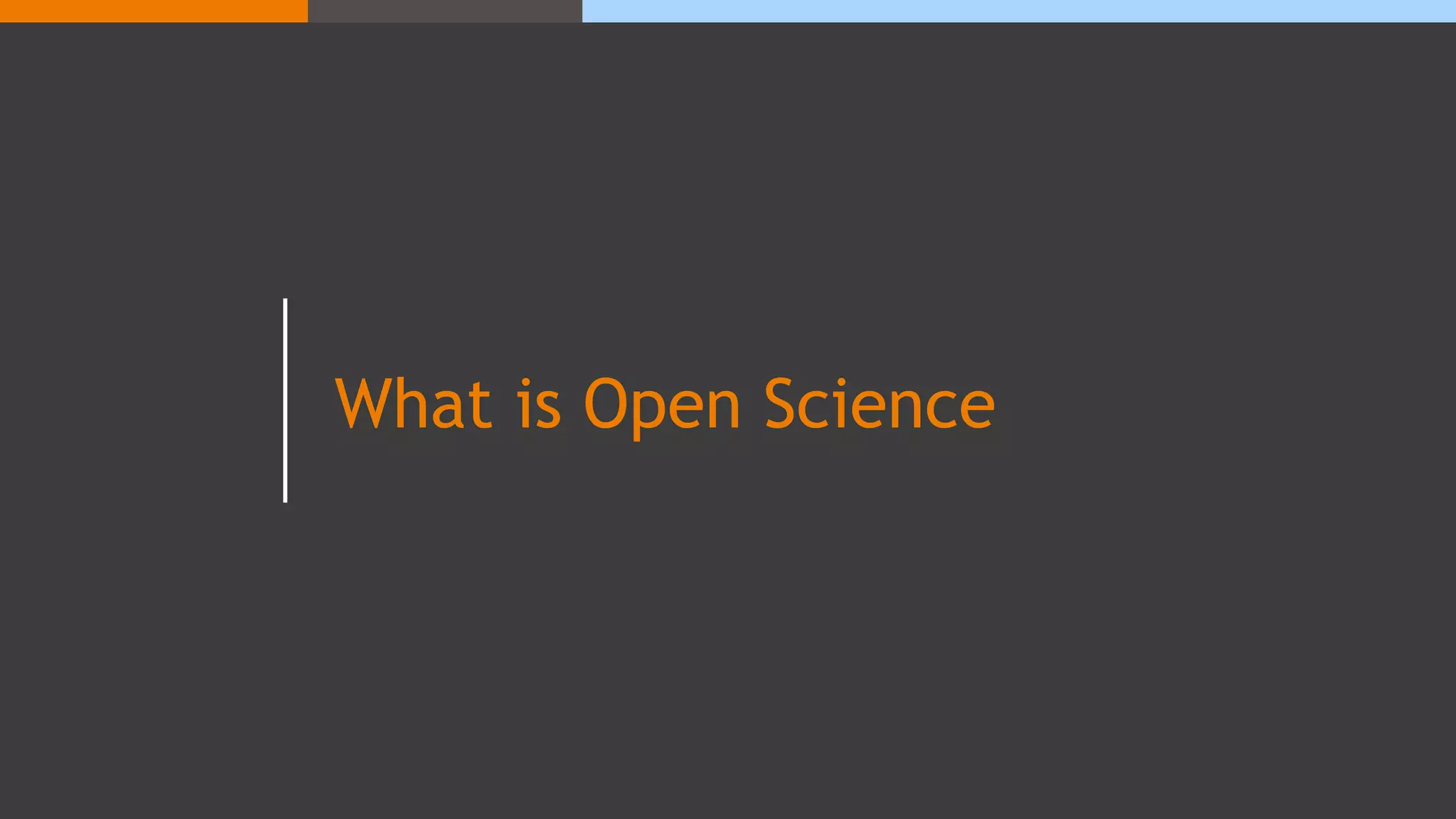
![What is Open Science?
The movement to make scientific research, data and dissemination
accessible to all levels of an inquiring society.
[FOSTER, Open Science Definition https://www.fosteropenscience.eu/taxonomy/term/7]
Scope:
• Transparency in experimental methodology, observation, and collection
of data
• Public availability and reusability of scientific data
• Public accessibility and transparency of scientific communication
• Using web-based tools to facilitate scientific collaboration
[The OpenScience Project, What exactly is open science http://www.openscience.org/blog/?p=269]](https://image.slidesharecdn.com/whatisososfpontika-171002141105/75/What-is-Open-Science-3-2048.jpg)
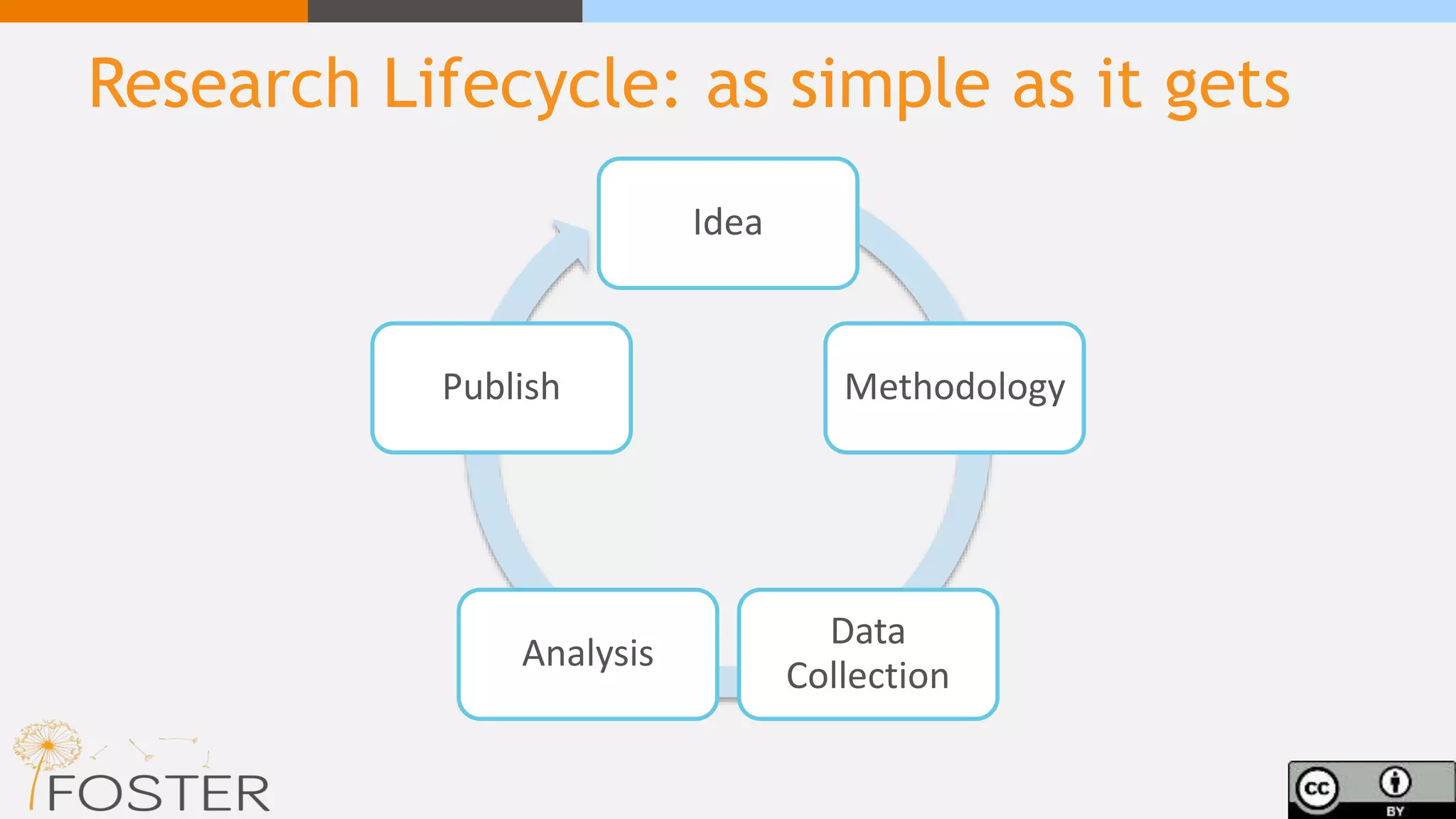
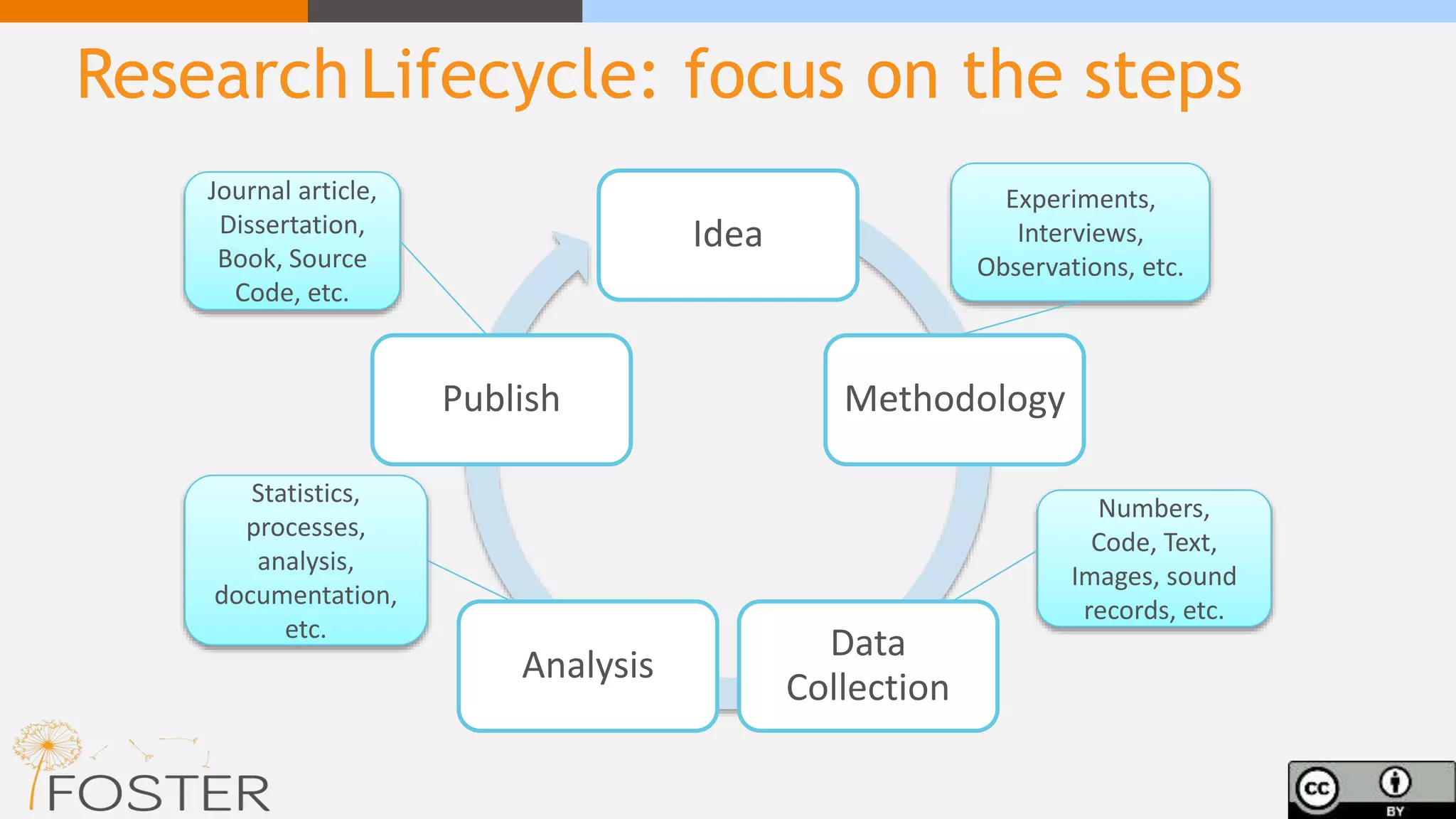
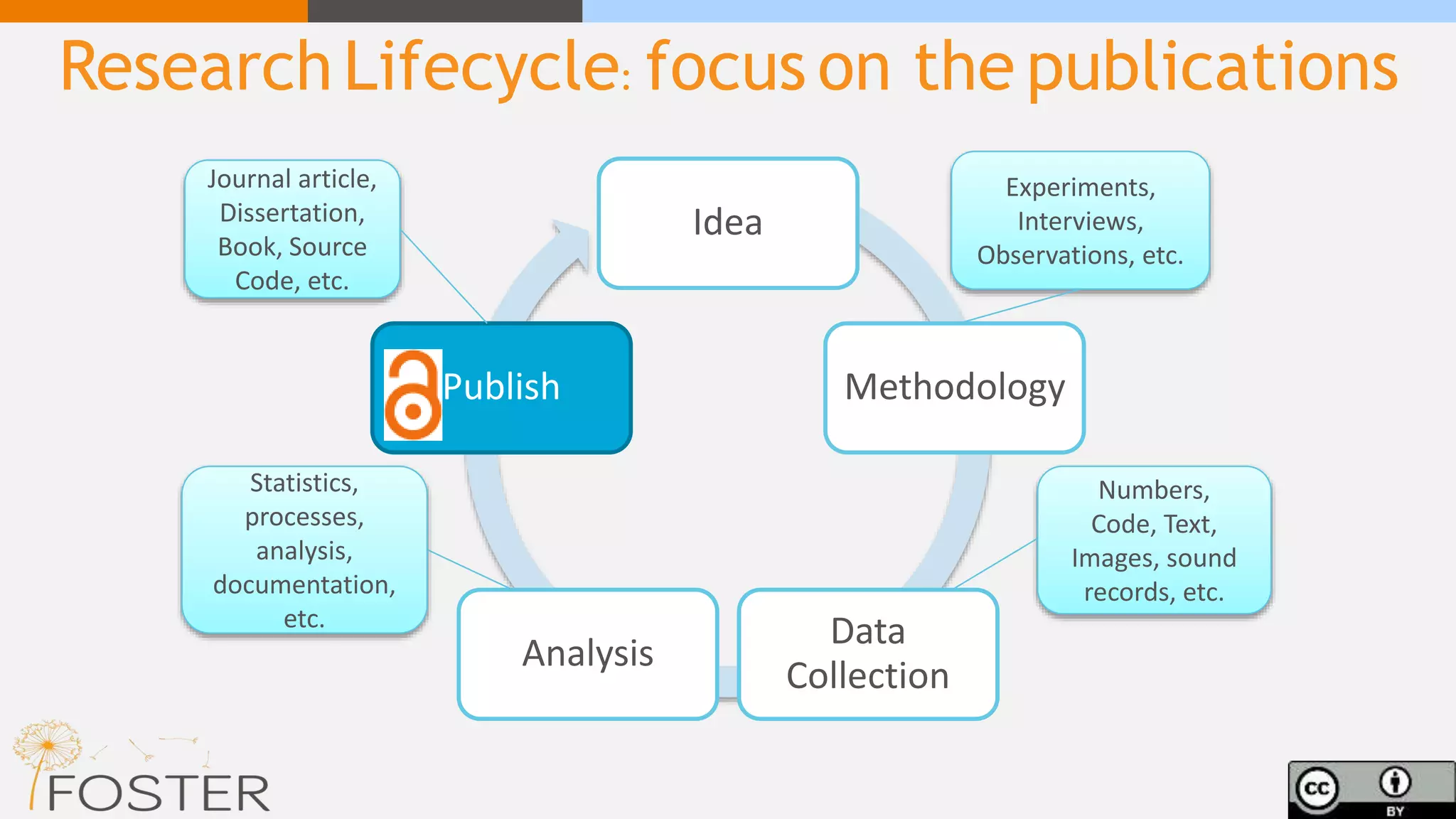
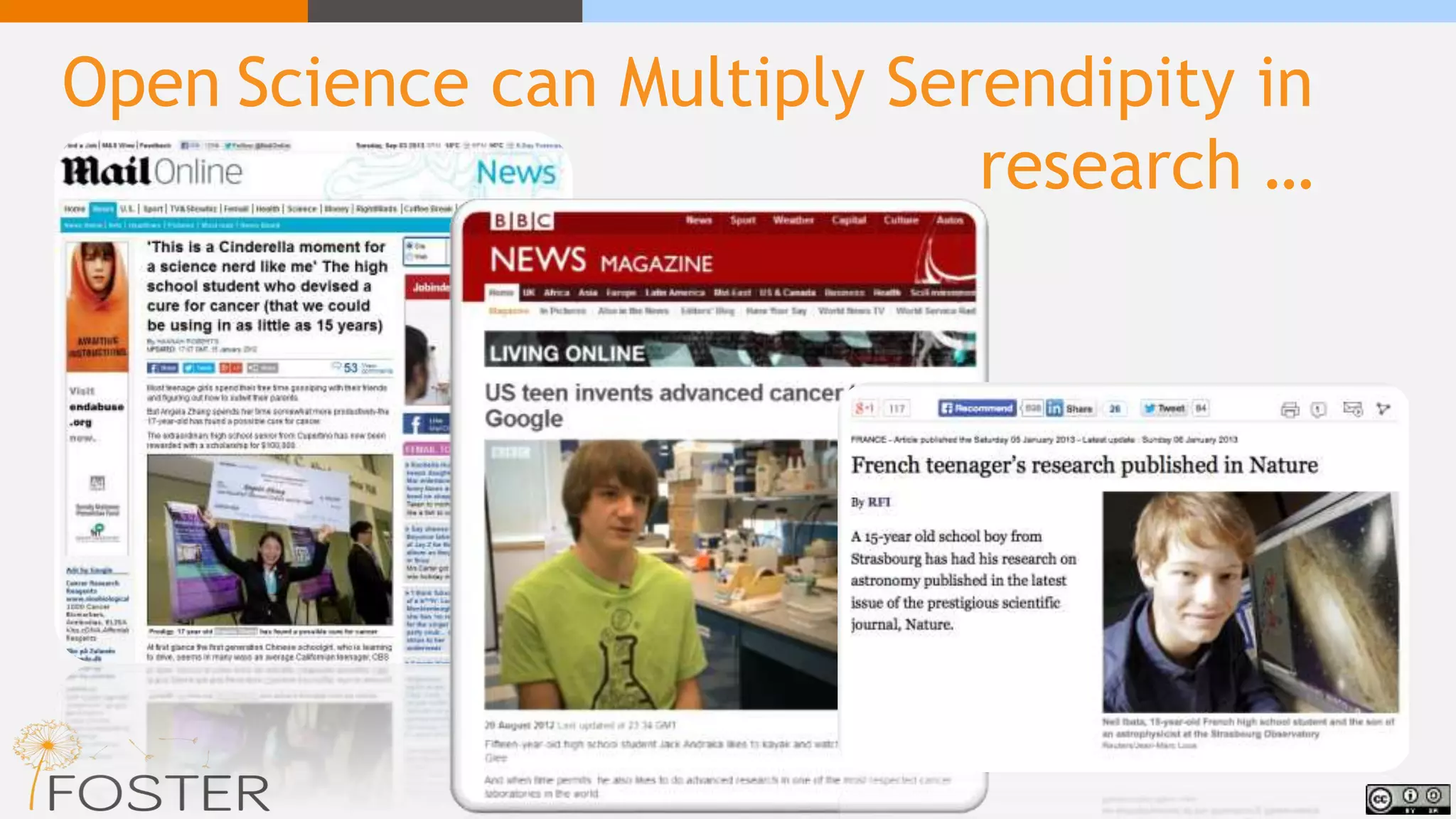
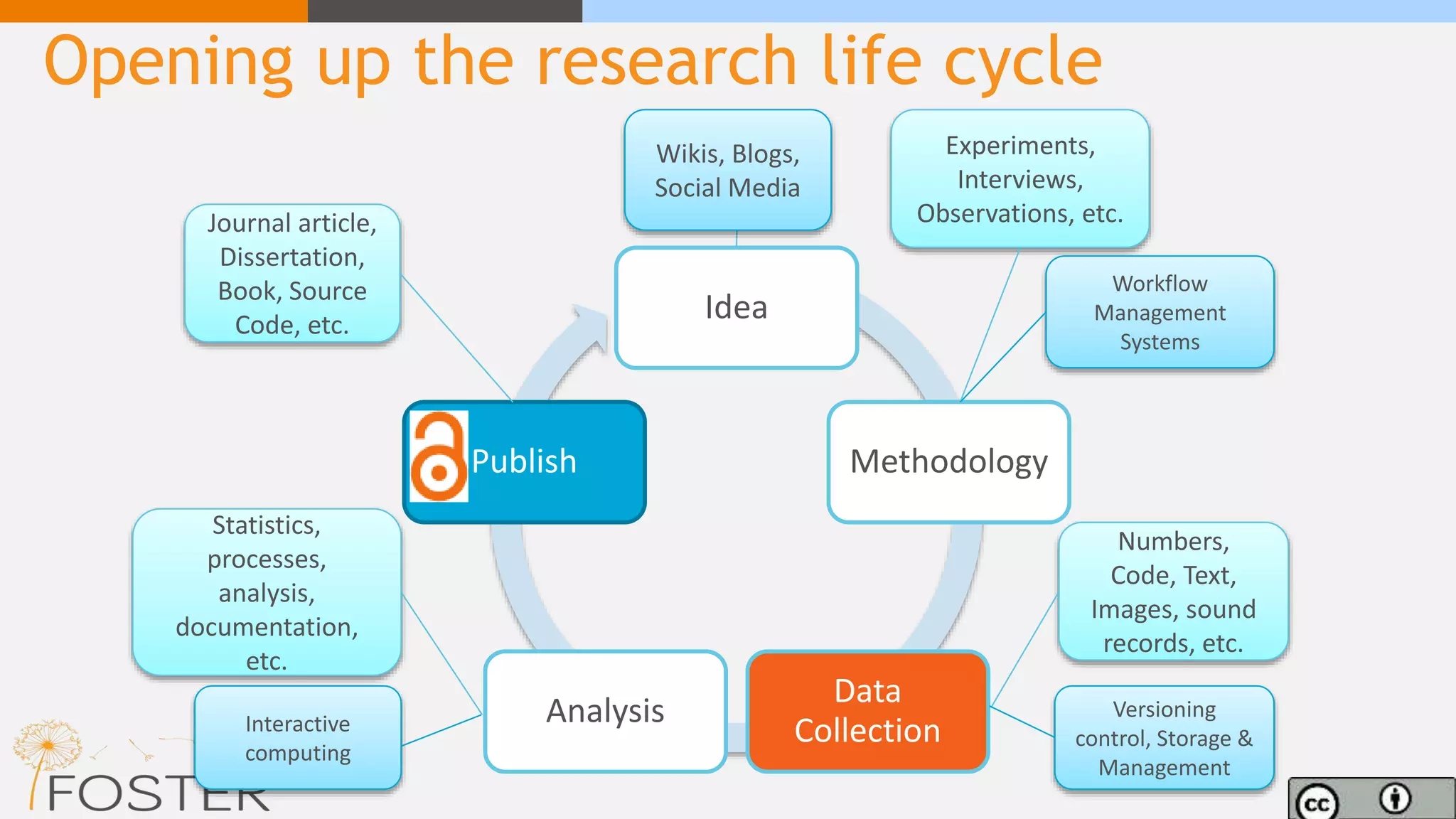
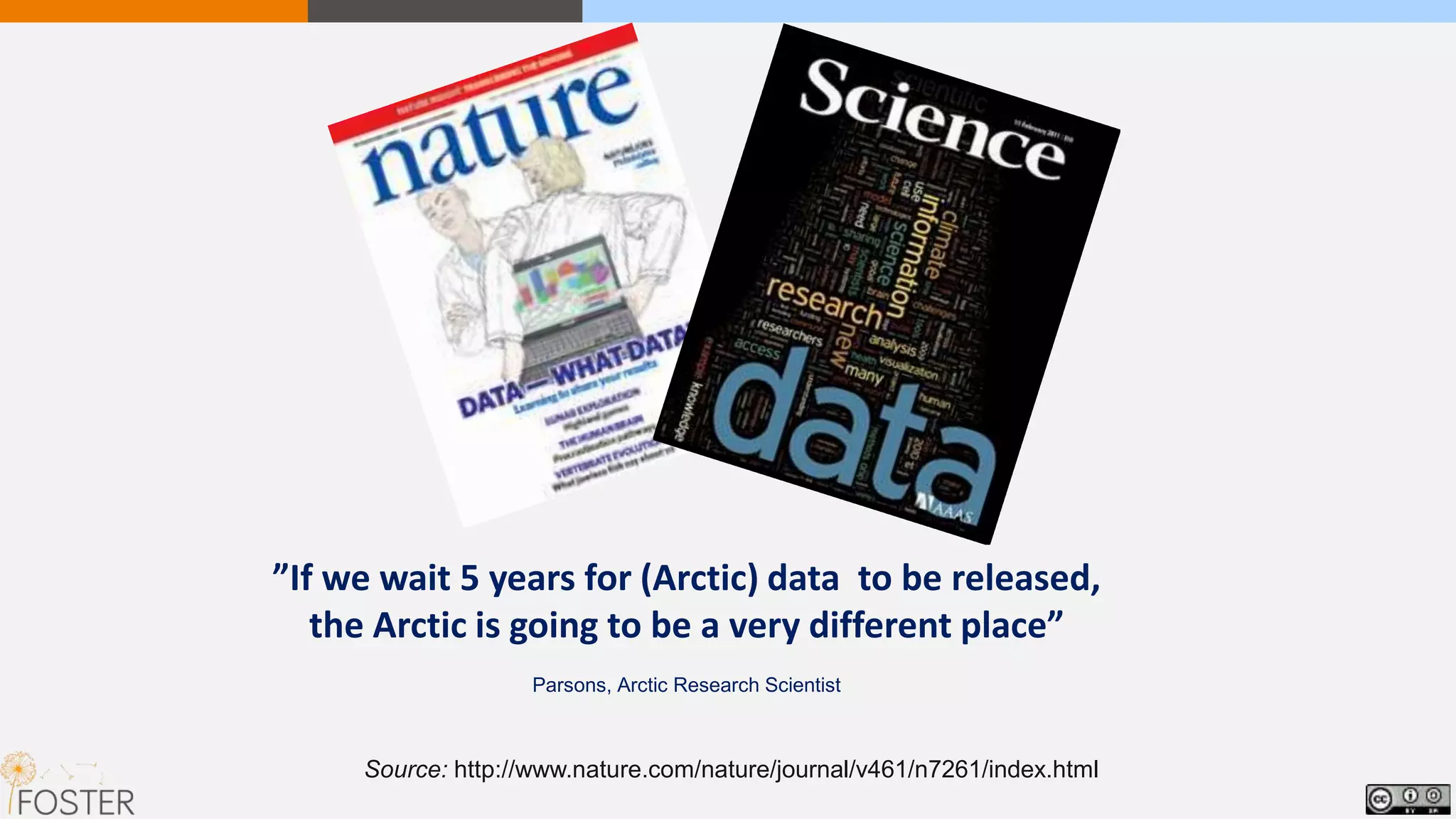
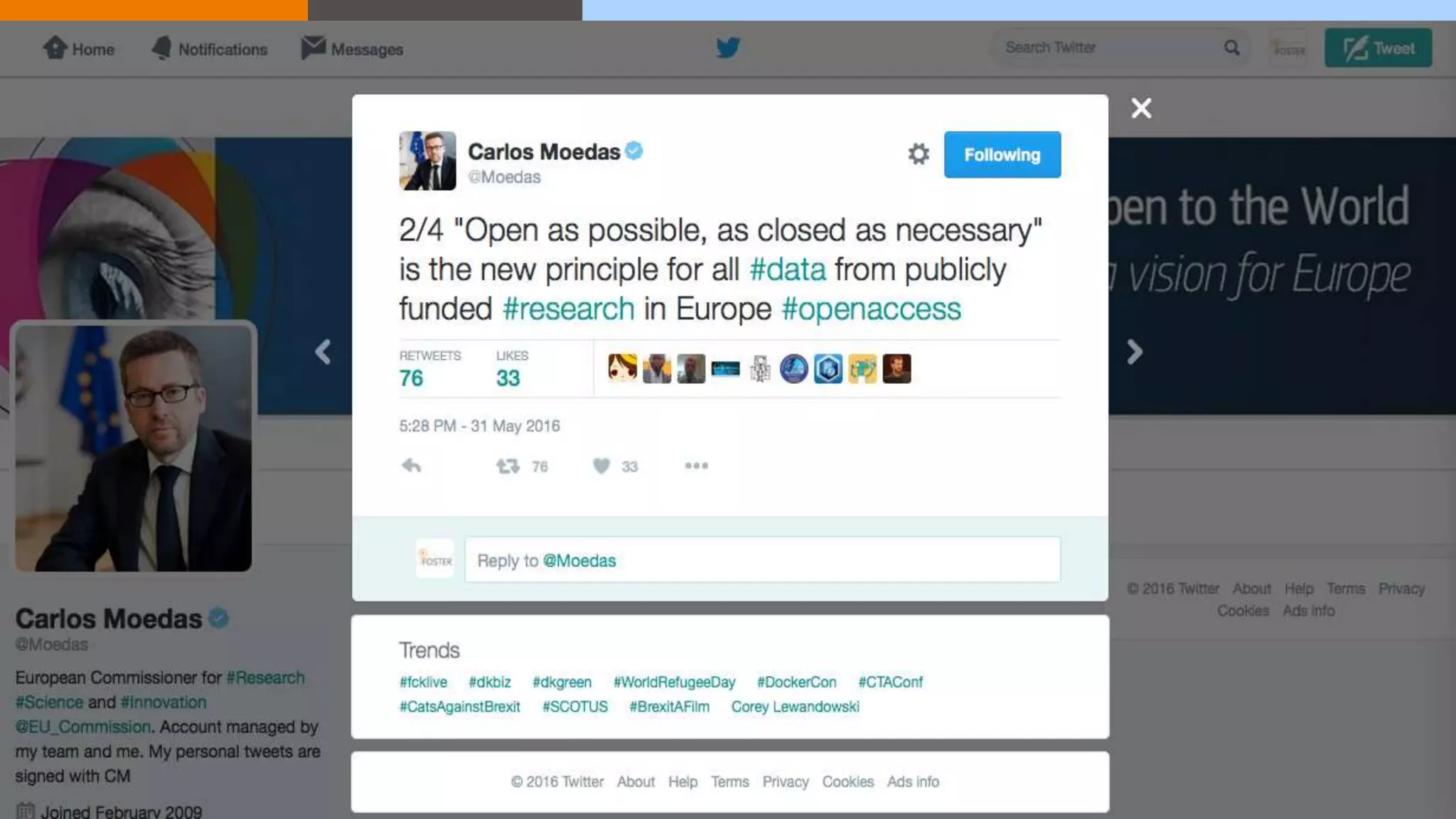
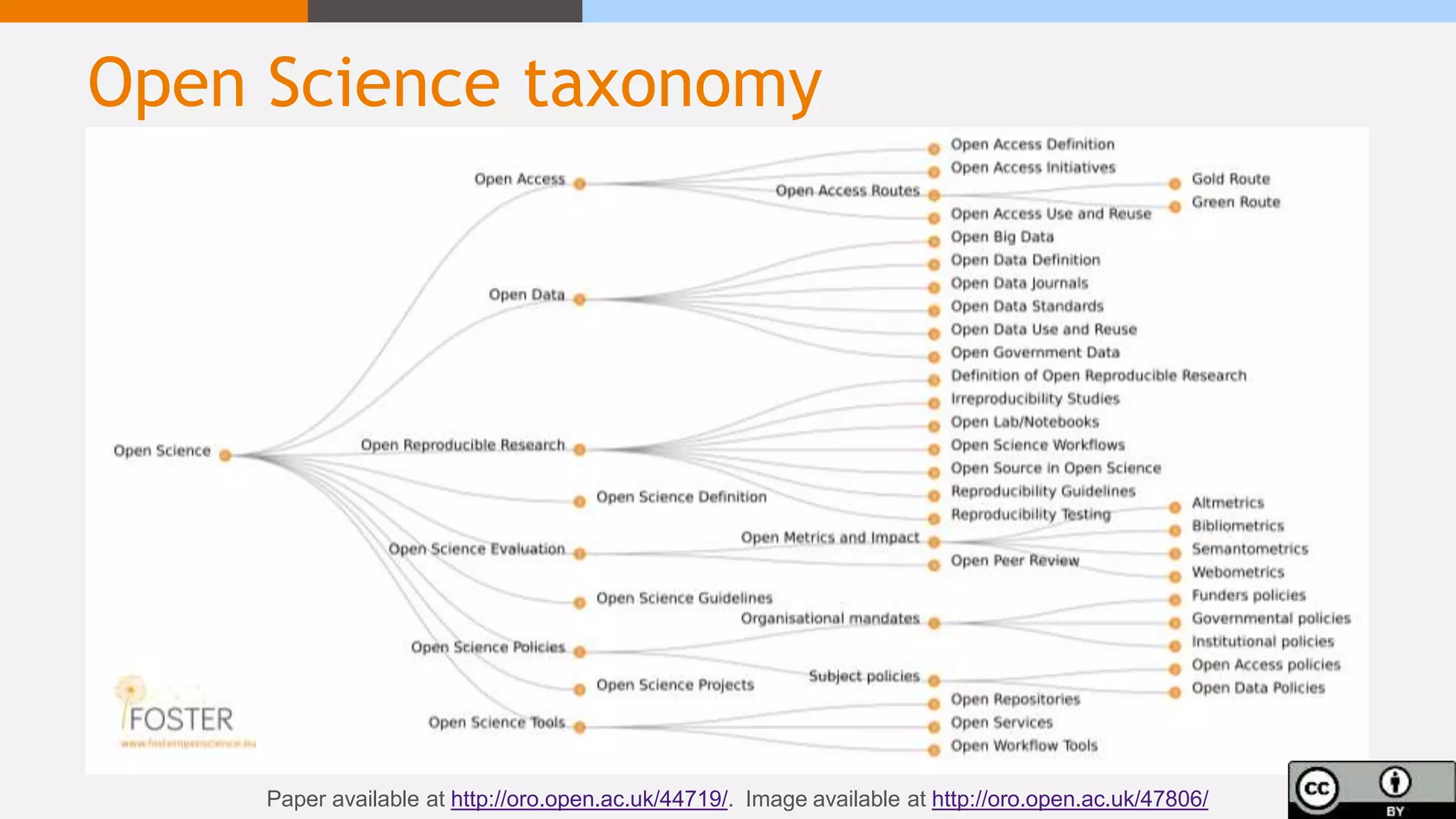
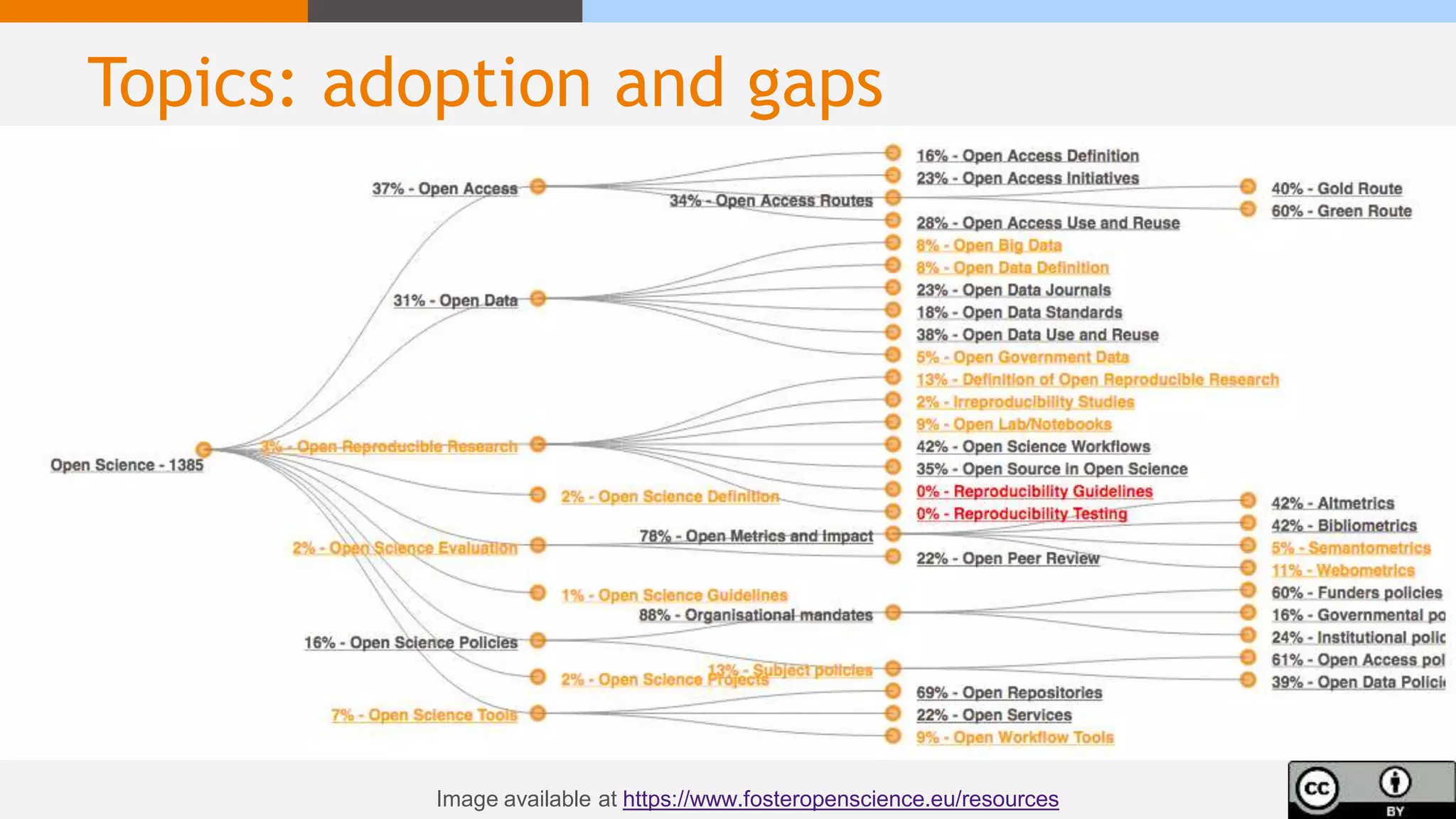
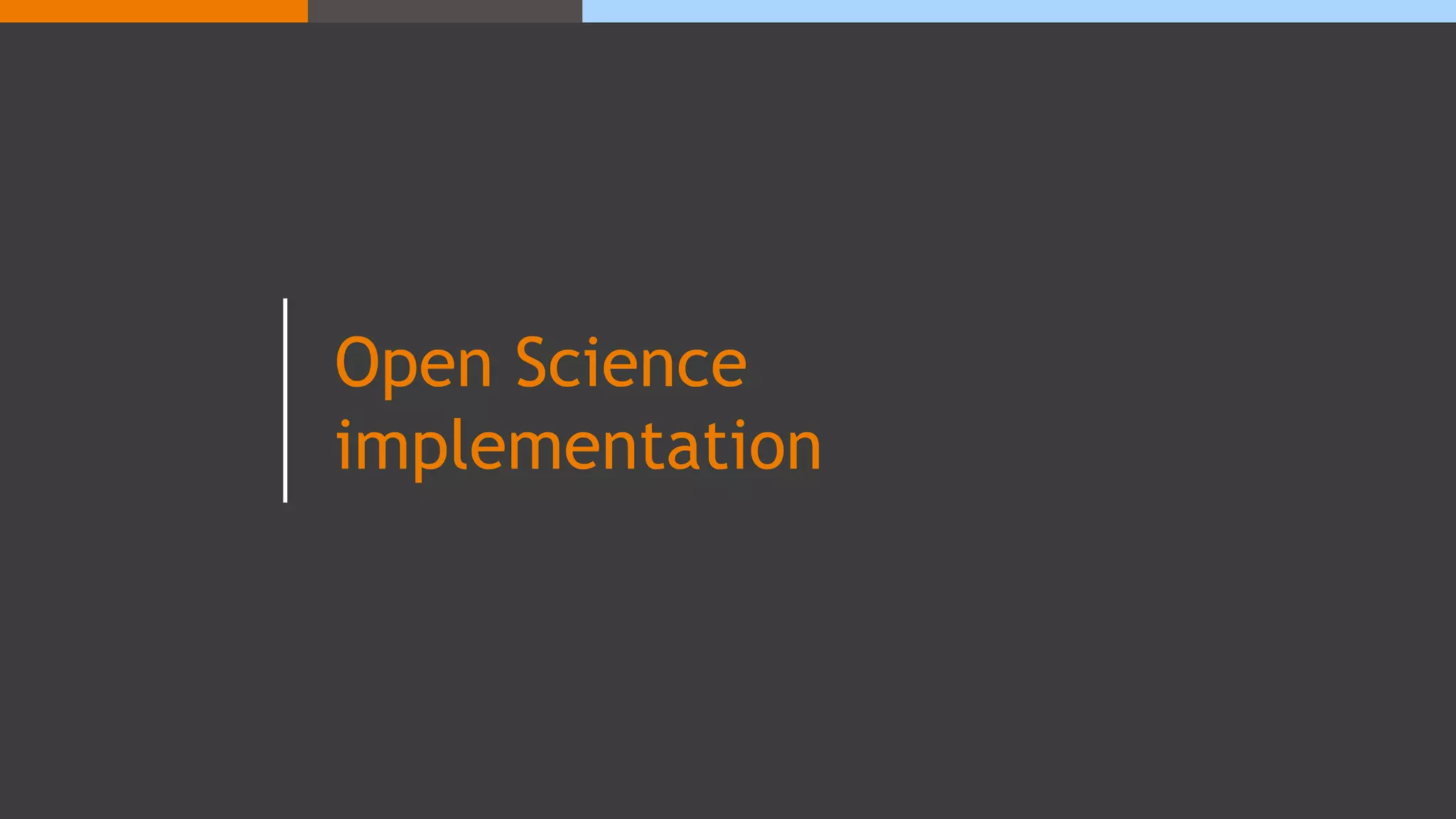

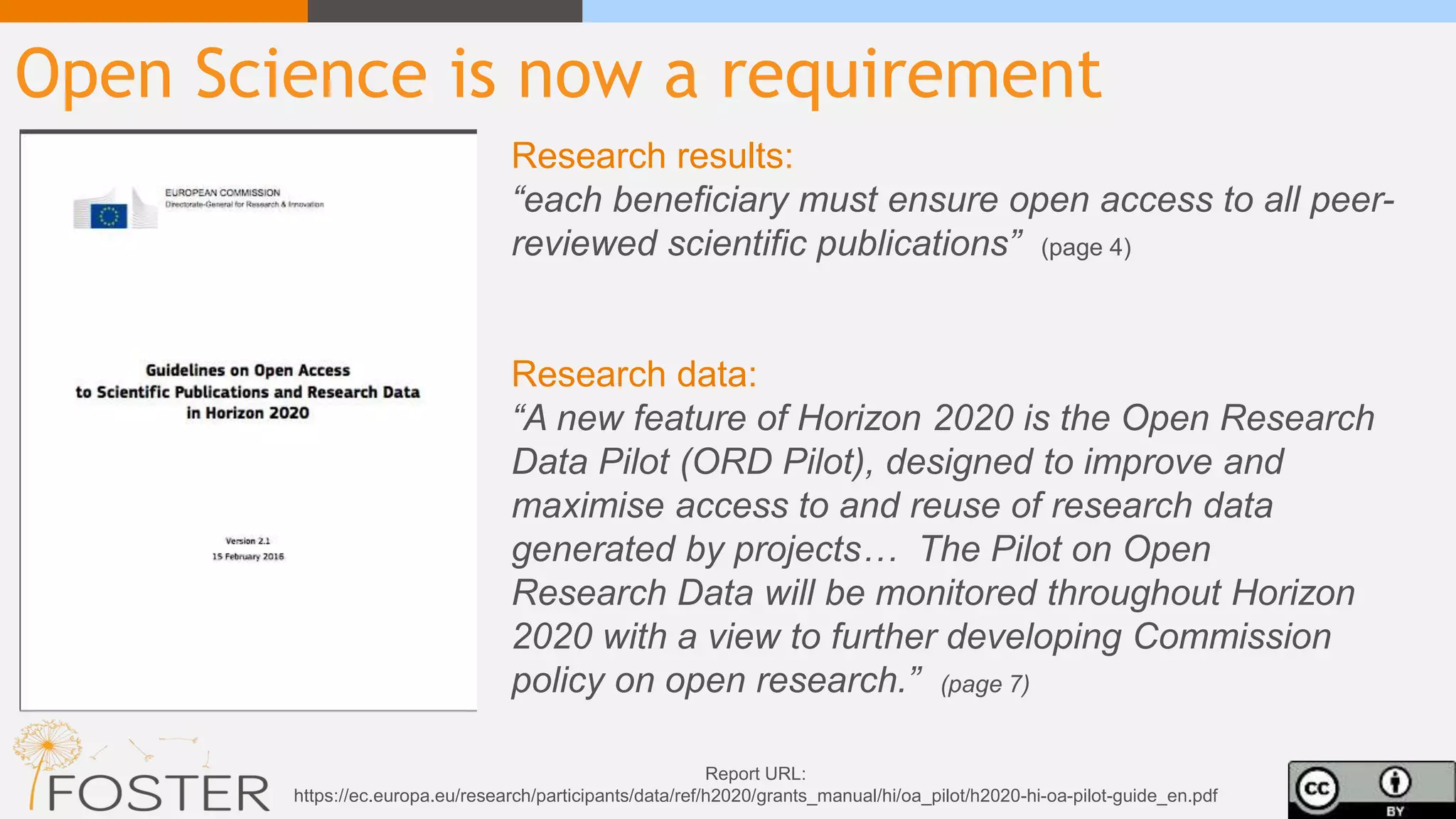
![Research and Social Impact
Research Excellence Framework (REF)
65%
20%
15%
Excellence – Impact - Implementation
Quality Research
Outputs
Impact
Research
Environment
[Source: http://www.ref.ac.uk/panels/assessmentcriteriaandleveldefinitions/]](https://image.slidesharecdn.com/whatisososfpontika-171002141105/75/What-is-Open-Science-16-2048.jpg)
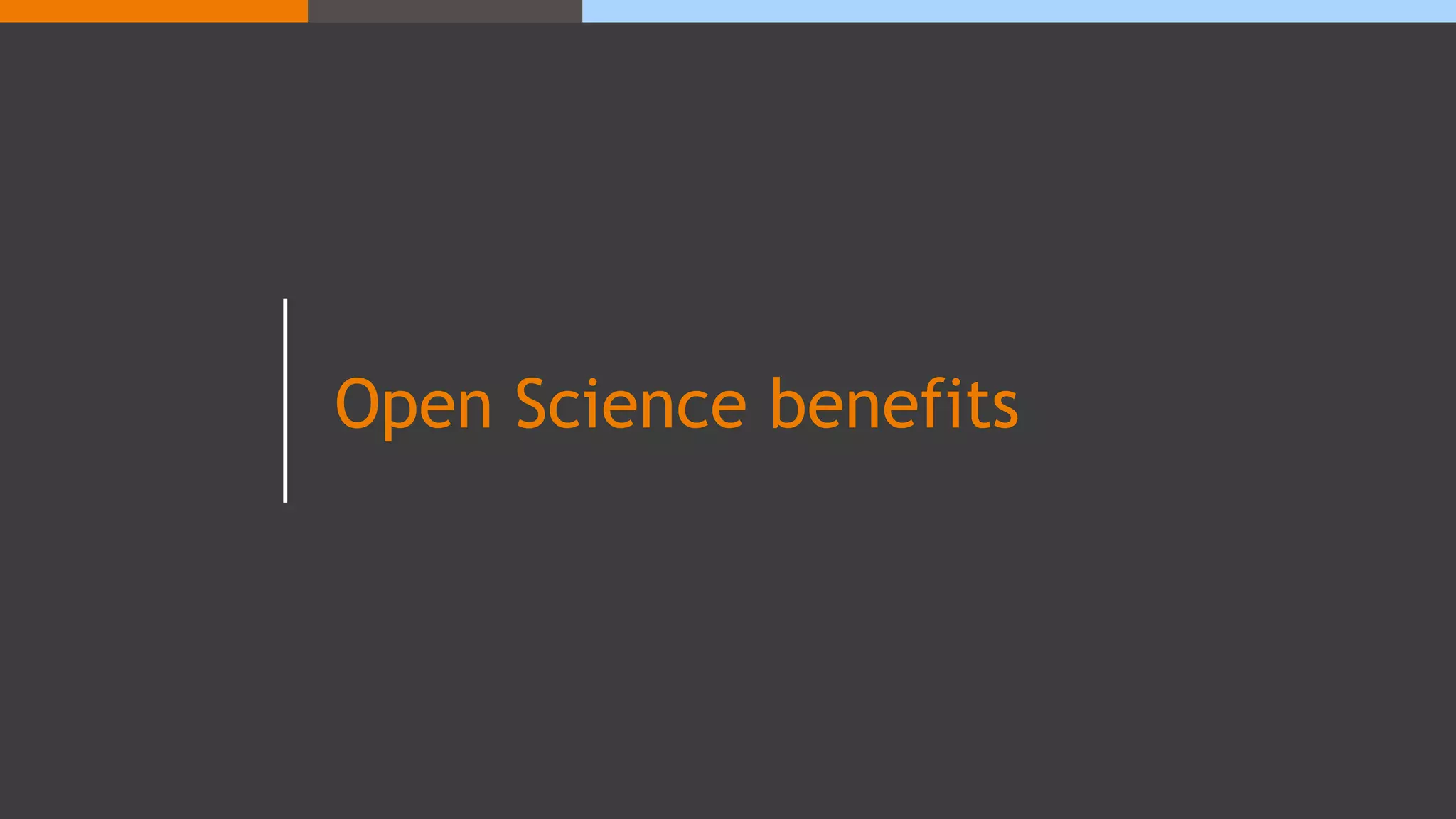
![General benefits
• Increases research efficiency
• Promotes scholarly rigour and enhances research quality
• Enhances visibility and engagement
• Enables the creation of new research questions
• Enhances collaboration and community building
[Source: Open To All? Case studies of openness in Research
http://www.rin.ac.uk/system/files/attachments/NESTA-RIN_Open_Science_V01_0.pdf]](https://image.slidesharecdn.com/whatisososfpontika-171002141105/75/What-is-Open-Science-18-2048.jpg)
![Benefits for early career researchers
• Become pioneers
• Have gained valuable experience
• Distinguish from the crowd
• Plan successful research proposals
• Receive higher citations
• Know how to comply with funders’ policies
• Comply with funders’ policies
• Demonstrate research and societal impact
[Note: see also benefits of open access for early career researchers
http://oro.open.ac.uk/44720/]](https://image.slidesharecdn.com/whatisososfpontika-171002141105/75/What-is-Open-Science-19-2048.jpg)
